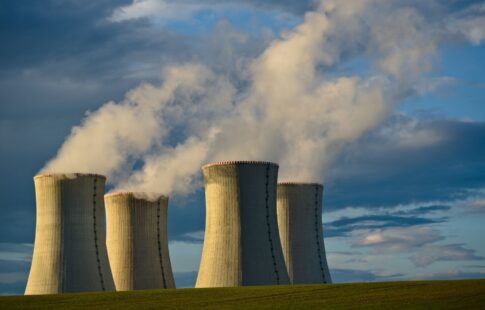
What Is the Greenhouse Effect?
We are reader-supported. When you buy through links on our site, we may earn affiliate commission.
Climate change and global warming are concepts that circulate the media regularly. This awareness has changed society in ways that we’re still coming to terms with. Straw-less cups, compostable to-go containers, and electric cars are all green features that humanity has implemented into daily life to limit rising temperatures.
We have become so consumed in green innovations and solutions that we sometimes forget to communicate clearly about the original problem. You may ask yourself, “How exactly does the Earth’s temperature rise?” or “What is the greenhouse effect?” To answer this question, we must take a trip back to science class.
The Greenhouse Effect
The Earth’s natural process for warming itself is called the greenhouse effect. This occurs when the sun’s energy penetrates the Earth’s atmosphere. The atmosphere absorbs some of this energy, and some of it reaches the Earth’s surface.
The land and oceans absorb some of the sun’s rays to warm the environment and release excess energy back into the atmosphere. This extra energy is re-absorbed by greenhouse gases, transferred into heat, and cast away from the planet. The natural cycle and balance of this heating and cooling maintains life on Earth.
The natural greenhouse effect warms the planet to 33°C over what it otherwise would be without this process. This precise temperature developed the natural world all around us, from the plant species in our gardens to our favorite beaches.
When humans interfere with the natural atmospheric balance, we promote an enhanced greenhouse effect that causes environmental degradation.
The Enhanced Greenhouse Effect
The greenhouse effect became skewed when air pollution increased. The rise of industrialization, mass transportation, and factory farming contributes to the increase of disruptive greenhouse gases emitted into the atmosphere.
As the number of these gases elevates, the amount of heat trapped in the atmosphere increases, creating a global temperature increase.
The amount of carbon dioxide (CO2) in the atmosphere has increased from 280 parts per million (ppm) in the 1800s to 409.8 ppm today. This increase has contributed to the 1°F temperature increase discussed with climate change. CO2 is an air pollutant that significantly slows the release of heat from the atmosphere.
Methane also contributes to the Earth’s rising temperature. The amount of methane in the atmosphere also increased from 800 parts per billion (ppb) in the 1800s to 1,875 ppb today. Methane is 30 times more effective at trapping heat energy in the atmosphere than CO2. This potent greenhouse gas poses a significant challenge to maintaining the natural rhythm of the greenhouse effect.
Some long-term impacts of the enhanced greenhouse effect are:
- Increased frequency of forest fires and droughts.
- Rising sea levels from ice melt.
- Plant and animal species extinction.
- Habitat loss.
- Stronger and more frequent hurricanes.
How Do We Enhance the Greenhouse Effect?
As humanity develops new technologies and resources, more pollutants get released into the atmosphere. These human-emitted greenhouse gases directly restrict energy release from the planet. It is essential to evaluate the behaviors that lead to this increase in environmentally degrading pollution.
The meat and dairy industry contributes to 14.5% of all greenhouse gas emissions. Cattle and other farm animals emit methane through gas release, which projects into the atmosphere. When one purchases animal products, they financially support the production of these gases.
We also contribute to the release of CO2 into the environment through our current methods of transportation. In America, cars and trucks contribute to one-fifth of the country’s greenhouse gas emissions. One gallon of gas burned releases 24 pounds of CO2 into the atmosphere.
Releasing this quantity of CO2 into the environment throws off the natural rhythm of the greenhouse effect. The normalization of burning fossil fuels through transportation makes this the most direct form of environmental degradation by humans.
The good news is, there are ways to limit our negative behaviors to maintain the greenhouse effect’s natural balance.
How to Maintain the Natural Occurrence
By limiting our greenhouse gas emissions, we can reduce the rate at which our planet heats itself. Maintaining the original balance of the atmosphere will allow for the world to support all life. This will minimize extreme weather patterns, extinctions, and habitat destruction.
To lessen our greenhouse gas emissions, we can adopt a vegan or flexitarian diet. By reducing our meat and dairy consumption, we can limit the quantity of methane released into the environment and allow energy to reflect away from the planet.
We can also lower our CO2 emissions by adopting alternate forms of transportation. Investing in an electric car, using public transportation, or riding your bike can help reduce your greenhouse gas footprint. One can also carpool to lower their carbon footprint efficiently.
Reaching out to your community members can help you better support each other’s efforts to reduce emissions. When you work together with your peers, you can effectively produce local solutions to global issues. One person driving to work or limiting their meat consumption doesn’t make a substantial impact. But when an entire community adopts green practices, significant change can occur.
Share on
Like what you read? Join other Environment.co readers!
Get the latest updates on our planet by subscribing to the Environment.co newsletter!
About the author

Jane Marsh
Starting from an early age, Jane Marsh loved all animals and became a budding environmentalist. Now, Jane works as the Editor-in-Chief of Environment.co where she covers topics related to climate policy, renewable energy, the food industry, and more.





